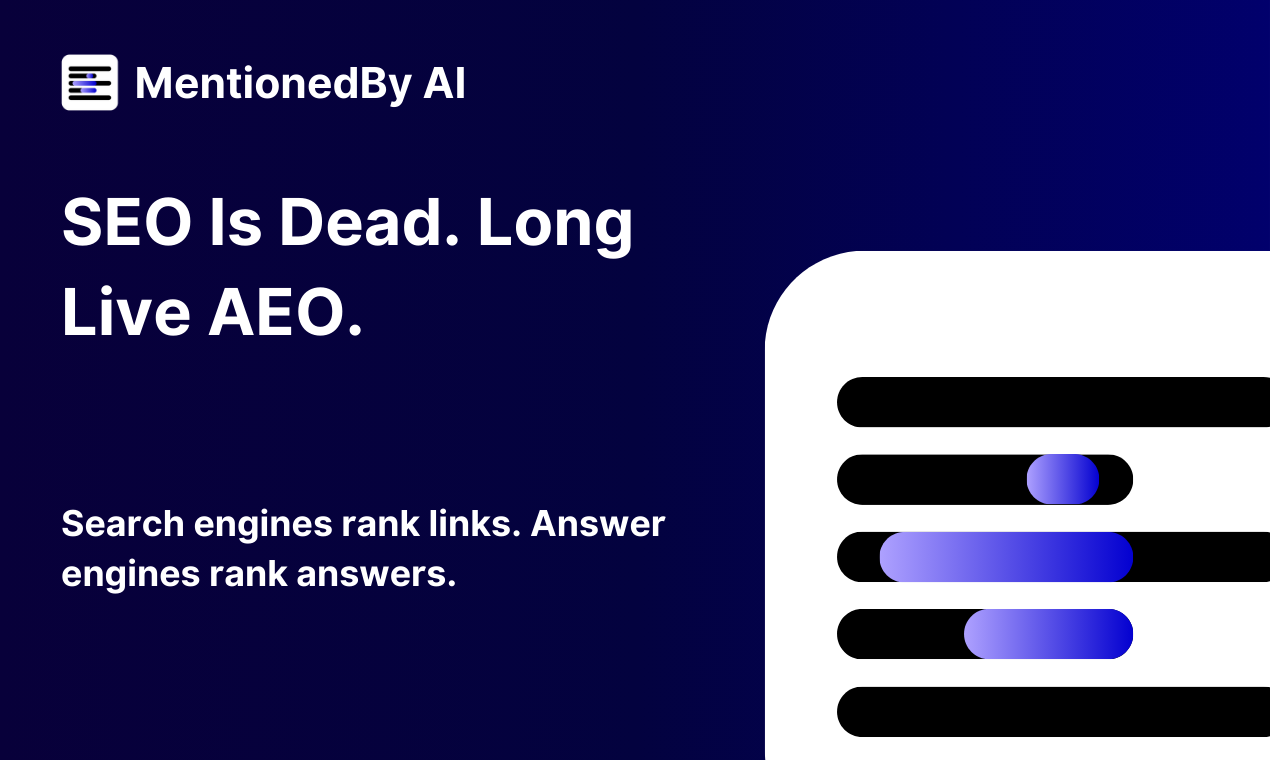In the rapidly evolving digital landscape, traditional Search Engine Optimization (SEO) is undergoing a significant transformation. The emergence of AI-driven search platforms has shifted the focus from merely ranking high on search engine results pages to directly answering user queries. This paradigm shift heralds the rise of Answer Engine Optimization (AEO) and Generative Engine Optimization (GEO), signaling a new era where providing precise, concise answers is paramount.
The Evolution from SEO to AEO and GEO
Historically, SEO strategies centered on optimizing content with specific keywords to improve visibility on search engines like Google and Bing. However, with the advent of AI-powered search assistants and generative AI models, users now expect immediate, accurate responses to their inquiries. This change necessitates a focus on AEO and GEO, which prioritize delivering direct answers over traditional keyword optimization.
AEO involves structuring content to provide clear, concise answers to user questions, enhancing the likelihood of appearing in featured snippets and voice search results. GEO, on the other hand, focuses on optimizing content for generative AI systems that synthesize information to generate comprehensive responses. Both approaches aim to align content with the evolving behaviors of users who seek instant information.
Key Strategies for Implementing AEO and GEO
To effectively adapt to this new landscape, brands should consider the following strategies:
1. Develop High-Quality, Context-Rich Content
Creating in-depth content that thoroughly addresses common and complex questions increases the likelihood of being referenced by AI models. Utilizing natural language and avoiding keyword stuffing ensures the content resonates with both users and AI systems. Incorporating various formats, such as visuals and data tables, can further enhance content authority.
2. Implement Structured Data Markup
Utilizing schema markup helps search engines and AI models understand the context of your content. Applying structured data to FAQs, how-to guides, and product information can increase the chances of appearing in rich snippets and answer boxes.
3. Optimize for Voice Search
With the rise of voice-activated assistants, optimizing content for conversational queries is essential. Focusing on long-tail keywords that mimic natural speech patterns and including variations of common questions can improve visibility in voice search results.
4. Focus on User Intent
Understanding the intent behind user queries allows for the creation of content that directly addresses their needs. This approach enhances user engagement and positions your brand as a reliable source of information.
Monitoring and Optimizing Brand Mentions in Generative AI
As generative AI systems become more prevalent, it’s crucial for brands to monitor how they are represented in AI-generated content. Tools like Mentionedby.ai offer solutions for tracking brand mentions across various AI platforms, providing insights into how your brand is perceived and referenced. By leveraging such tools, brands can identify opportunities to optimize their content and ensure accurate representation in AI-generated responses.
In conclusion, the shift from traditional SEO to AEO and GEO reflects the changing dynamics of user search behavior. By adopting these strategies and utilizing monitoring tools, brands can enhance their visibility and authority in the age of AI-driven search.
